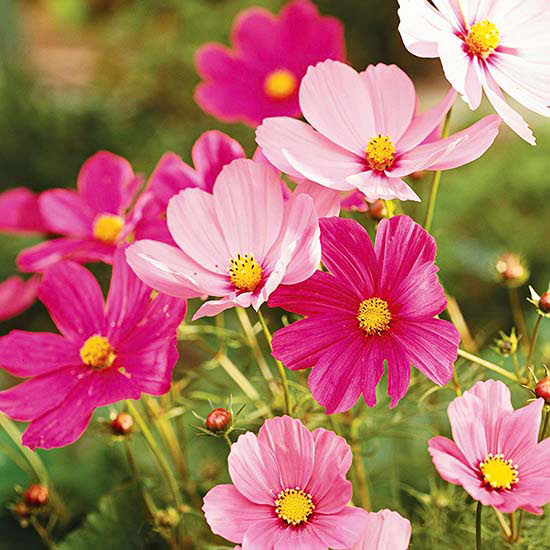
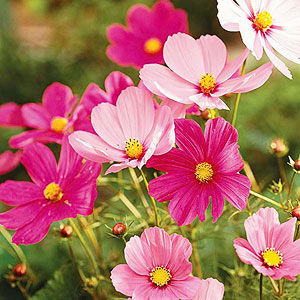
Whether you grow annuals from seed or as started transplants, getting them planted right will ensure you have a beautiful display of flowers or foliage.
Starting annuals from seed is a great way to save money, especially if you’re growing a large number of plants. You can sow many varieties, including sunflowers, cosmos, marigolds, bachelor’s buttons, annual poppies, balsam, morning glories, castor beans, and larkspur directly in loose soil in the garden. Or get a head start on the season by sowing them indoors.
Learn more about growing plants from seed!
continue reading below
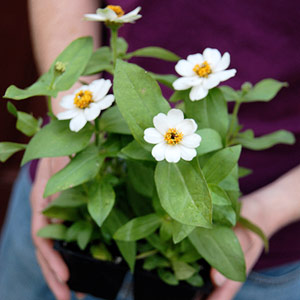
Growing transplants in the garden is necessary if you want special varieties that can’t be grown from seed or if you start seeds indoors. To plant them, dig a hole at least twice as wide as the container the plant is growing in, but no deeper. Gently loosen and spread apart the roots (especially if the plant is rootbound) before placing the plant in the hole. Then cover the roots with soil and water well.
Test Garden Tip: You can group annuals into two basic categories — cool season and warm season. Cool-season annuals do best in temperatures under 70-75F, and are best for spring or fall displays (or winter, in the Deep South). Popular cool-season annuals include pansy, viola, nemesia, diascia, osteospermum, and flowering kale. Plant cool-season annuals before your average last frost date.
Warm-season annuals, on the other hand, do best in warm conditions and need to be planted after your last frost date and once the soil has warmed. These varieties do best in summer. Examples include ageratum, angelonia, impatiens, begonia, morning glory, petunia, dusty miller, geranium, nasturtium, and moss rose.
More Planting Tips
Water your annuals well after you plant them — they’re most susceptible to drying out the first few weeks after you put them in the ground.
Lay a 2- to 3-inch-deep layer of mulch over the soil around your new plants. This helps the soil hold moisture and prevents weeds from growing.
Once you’ve mastered growing annuals, give perennials a try with our complete growing guide.
Deadheading and pinching are two easy tasks that will keep your annuals looking their best.
Pinching
Keep your annuals nice and compact by pinching off the top couple of inches of new growth from time to time. By removing the main growing point, you encourage the plant to branch out, becoming bushier instead of tall and lanky.
Watering
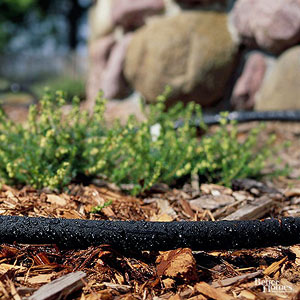
Because each annual has its own water needs, there’s no one-size fits all rule to supplying the plants with the moisture they need.
The most drought-tolerant varieties, including lantana, California poppy, gazania, nasturtium, ptilotus, and moss rose may not need any supplemental water after they get established in your garden. Others don’t hold up well to drought and require consistently moist soil.
Regardless of how often you water, keep your plants healthier by using a soaker hose. This permeable hose slowly seeps water into the ground, directly at the root zone. It keeps plant foliage dry, which helps your plants resist disease (since many diseases love wet leaves).
Deadheading
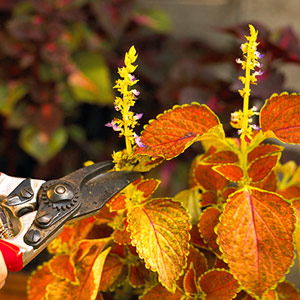
Deadheading sounds severe, but it’s quite simple: It’s cutting the faded flowers off your plants. It makes your plants look better and it prevents them from setting seed so you don’t have a mess of bachelor’s buttons, California poppy, cosmos, calendula, cleome, datura, and verbena seedlings popping up in your garden.
Because deadheading stops them from making seed, many annuals keep right on blooming, so you can enjoy more of your favorite flowers.
Learn more about deadheading.
If your garden is blessed with rich soil or you amend it with compost or other forms of organic matter regularly, you probably won’t need to feed your plants. But if you’re cursed with poor soil or growing plants in pots, fertilizing can be helpful.
Learn more about fertilizing!
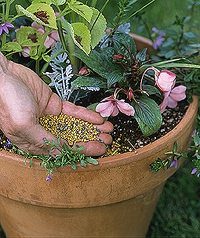
In most cases, all you need is a general-purpose garden fertilizer. Be sure to follow the directions on the packaging.
You might be tempted to use more fertilizer than is recommended, but you can have too much of a good thing. Overfertilization may make your plants flower less, suffer root injury, or even kill your annuals.
Because plants in pots can’t reach farther into the soil to find more nutrients, they depend on you to feed them. One easy solution is to use a slow-release plant food. You just need to apply it once or twice a season and it feeds your plants for you.
Deadheading Your Garden
Deadheading Your Garden
SOURCE:http://www.bhg.com/gardening/flowers/annuals/annual-care-guide/